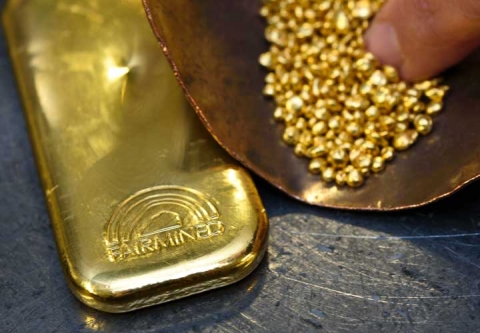

Subscribe
Stay current on your favorite topics
Corporates are beginning to perceive the profit and brand potential in emphasising the environmental and social attributes of their products
Mining & metals producers are not alone in undertaking efforts to demonstrate to customers, investors, lenders, regulators and other stakeholders the sustainability of their products. Many companies across sectors are increasingly engaging in responsible business activities in response to social, environmental and governance challenges and opportunities.
In parallel with a rising tide of regulatory requirements, benchmarking pressures and climate and human rights related litigation, corporates are beginning to perceive the profit and brand potential in emphasising the environmental and social attributes of their goods and services. Companies are being heard to say that they do not have a sustainability issue, but they do have business issues, which comprise environmental, social and political considerations.
Pressures may be particularly acute for companies in or involving the extractives sector. They are, like companies across industries, subject to a raft of environmental regulations and human rights reporting and compliance regulatory obligations, as well as non-financial/narrative reporting pertaining to issues commonly referred to as environmental, social and governance (ESG) concerns.
Additionally, US and EU conflict minerals rules affect manufacturers and importers of ‘3TG’ minerals (the four most commonly mined conflict minerals being gold, columbite-tantalite, also known as coltan (the metal ore from which tantalum is extracted); cassiterite (the metal ore from which tin is extracted); wolframite (the metal ore from which tungsten is extracted); and their derivatives). Regulators may eventually turn their attention to what might be termed ‘conflict minerals plus’. According to news outlets, the London Metal Exchange will soon require copper, cobalt and tin producers that source metal from the Democratic Republic of the Congo to conduct professional audits. Customers are increasingly insisting upon basic performance standards in the products that they buy; and there are certain areas and minerals where they are particularly discerning, for example, artisanal production in the metals sector.
The common denominator underpinning stakeholder pressures is a fundamental request and need for accurate and robust information. How were raw materials mined, traded, blended, transported, manufactured or produced? Given the limited life cycle of many mineral end-uses (as with batteries, for example), how will these products be recycled? Such information has traditionally been difficult to obtain given that mining & metals supply chain operations are formed from vast, geographically diverse, multi-tiered and dynamic webs of disparate stakeholders.
Mineral products are in many instances physically indistinguishable; one ton of mineral product has traditionally been thought of as essentially identical to the next. Information about mineral products can be variable, unreliable, disorganised or proprietary, if it exists at all. Distrust and/or the perceived competitive advantage of secrecy between organisations may discourage the sharing of, or the reliance on, shared data. In an era of cost-cutting, the resources involved in sourcing such information may prove prohibitive.
There is an increasing demand for better solutions to source this information and, armed with it, to introduce better sustainability reporting and develop sustainable, legally compliant products. Because of its ability to improve transparency, traceability, accountability, integrity and efficiency through open, incorruptible data sharing, blockchain is being discussed as that solution.
66%
of respondents said they were willing to pay more for sustainable goods
Source: Nielsen, 2015
The business case for blockchain
Digital governance systems, in particular blockchain systems, are emerging as viable solutions capable of efficiently enforcing rules and ensuring trust and transparency. Blockchain data is recorded on a block and across multiple copies of a ledger that is distributed over many nodes, making the blockchain highly transparent. Every block links to adjacent blocks that are stored in a decentralised fashion. Security mechanisms help to ensure that stored records are accurate, tamper-evident and cryptographically signed.
Transparency is key to a sustainability strategy, but a credible corporate sustainability strategy may eventually demand some additional affirmative action by companies to take responsibility for the environmental and social impacts they have on their surroundings. Blockchain could be catalytic to these efforts, and it also has the potential to provide a market for sustainability information.
The burning question is, will people pay more for a sustainable product in the mining sector
US$ 22.8tn
is held globally in investments with at least a partial ESG mandate
Source: Morgan Stanley
How it might work
It’s about telling a story, providing the portrait of a product or its component commodities in the round and the applications for the narrative are endless: data consistency, documentation and traceability from provenance to producer, manufacturer, logistics and packaging providers; automated due diligence and reporting exported from the mine site; the monitoring of evolving customer and legal requirements; and environmental impact recorded on the blockchain and sustainable behavior rewarded through incentives, such as tax rebates.
Building a life-cycle record of goods would also help to develop the circular economy: The system reports and stores all transactions in a decentralised and open manner in order to curb fraud and build trust through transparency. Market entrant mines or incumbent players could verify claims at the source (tracked throughout the value chain) with the ultimate goal of extracting premiums for demonstrating competitive, leading-edge sustainability practices.
None of this can be achieved without better transparency into the sometimes hidden and beneficial ownership arrangements at mines and with respect to mineral products. The current lack of clarity on who owns what through the mineral supply chain is a recognised weakness for natural resource governance, which dampens investment by certain investor classes such as ESG.
The Extractive Industries Transparency Initiative (EITI) has announced its view that ownership transparency is vital to prevent tax evasion, to mitigate illicit financial flows and to raise revenue from extractives—ultimately in a manner that benefits state and local communities, as well as those industry participants who already adhere to these standards. By 2020, countries implementing the EITI Standard must ensure that all mining, and oil and gas companies that apply for, or have a participating interest in, an exploration or production mining, oil, or gas license or contract within their countries publish the names of the ‘real owners’, including owners’ identities and those of any politically exposed persons. Blockchain technology could have a powerful impact in this regard: providing one, holistic platform to address ownership transparency on a transaction-by-transaction basis, and ‘stapling’ ESG attributes to mines, smelters, refineries and mineral products.
67%
of respondents said they use ESG principles as part of their investment approach and decision making
Source: RBC Global Asset Management Responsible Investing Survey, 2017
Beyond ESG attributes: Will product-quality traits drive the adoption of blockchain?
Beyond sustainability, information about the quality or specification of products could be reported in real time to enable more effective and efficient product placement. Even markets that are not now concerned about the sustainability trajectory might need to achieve a specific quality in a certain product and could use blockchain to achieve it.
What would this look like at the end of the day? Picture a conflict-free smartphone or tablet—perhaps the device you are reading this on—whose conflict-free certification is foolproof. Thanks to blockchain, this may soon be a reality. Now picture that same device affixed with other ESG ‘tags’ (for example, mined at a site with effective health and safety protections in place, where greenhouse gas emissions are reduced to improve energy efficiency, and/or where host communities are supported with jobs and schools) and certified as ethically and sustainably sourced. Another example might be using batteries incorporating conflict-free ESG-compliant minerals in electric vehicles (EVs), which can potentially improve the ‘green’ or otherwise sustainable credentials of EVs, and possibly justify and facilitate a premium payment.
For the mining & metals sector, initial efforts to embed qualitative traits on digital platforms will likely initially arise in the area of product quality (e.g., chemical composition, architecture and purity). If blockchain captures assays of material at the point of extraction, or even before (e.g., by horizontal drilling at the mineface), there is immediate and tangible value add generated, with potential just-in-time and made-to-order possibilities. Once blockchain adopts these components, it will become easier to add qualitative ESG elements to the existing blockchain— although certain steps, including the development of a transparent certification standard(s) available to all parties (including customers), would need to be considered.
The current lack of clarity on who owns what is taking its toll on natural resource governance and is dampening investment in the mining sector by certain investor classes such as ESG funds
Will people pay more for a sustainable product?
Market research in other spheres confirms that some will. In the food, fashion and retail jewellery sectors (all piloting blockchain to some degree), certain companies are capturing a premium on sustainably branded products such as organic cotton, fair-trade coffee, ethical seafood and conflict-free diamonds. In the mining & metals global supply chain, sustainability claims are starting to be shared more publicly with end-consumers. Two of several examples are Fairphone’s release of an ethical smartphone and Apple’s public pledge to cut its use of rare earth minerals but this perception is not universal. In some parts of the mining & metals sector, producers are skeptical as to whether sustainability attributes will ever generate a meaningful premium on their products.
US$ 190bn
Digital technology has the potential to help the mining industry generate an additional US$190 billion over the next decade
Source: WEF, ‘Digital Transformation Initiative: Mining and Metals Industry’
Linking the physical to the digital in practice
How exactly are companies ‘linking the physical to the digital’ in the mining & metals global supply chain with early blockchain applications? At a high level, software companies and consulting firms are deploying software and systems to facilitate, automate and streamline the exchange of information. For most blockchains in development, a transformation occurs whereby unique traceable assets are converted to the downstream supply chain, currently using a volume-based verification approach with the end goal of establishing physical traceability on the ground. For example, if ten units of ‘tagged’ contained metal enter a refinery, ten units of refined metal are ‘tagged’ as they leave it.
The European Partnership for Responsible Minerals, a public-private partnership consisting of governments and large industry players, is currently funding SustainBlock. This project, headed by iPoint-systems, aims to use blockchain technology for minerals and metals traceability from conflict-affected and high-risk areas. Together with its partners, iPoint has established a traceability process from mine to store, thereby demonstrating end- users’ accountability for the upstream due diligence process. In doing so, downstream supply chain participants and end-users gain access to reliable and verified information at all relevant stages of the supply chain.
"With the blockchain, we will in the future have a technology at our disposal that makes social and environmental sustainability in the supply chain verifiable. This will in turn enable producers or brands to demonstrate to their customers in a trustworthy manner their sustainability efforts, both within their own corporations and their supply chains," emphasises iPoint-systems CEO and co-founder, Joerg Walden.
Walden also recently co-founded the startup CircularTree to support the company’s activities and strategic focus on sustainable products and supply chain business models made possible by blockchain technology.
Other companies such as Cobalt Blockchain Inc. have looked at using blockchain to track cobalt from ‘mine to mobile’ in a new pilot scheme that assigns a digital tag to a sealed bag of cobalt produced by a vetted artisanal miner. The recording process would continue on the blockchain until the ore arrives at the smelter.
Picture a conflict-free smartphone or tablet whose conflict-free certification is foolproof. Thanks to blockchain, this may soon be a reality
Promise and challenge
Blockchain is obviously making an impression. Sustainable business fueled by stakeholder demands is irrefutably emerging as a new business model. Key considerations on the path to adoption for the mining & metals sector include:
Scalability: Easing and increasing the speed of blockchain transactions will be required before the technology can be meaningfully deployed
Data legitimacy: The tool is only as good as the information it stores. In the mining space, current applications still rely on the onboarding and uploading of batch data by accredited partners
Energy consumption: The majority of blockchains use proof-of-work (PoW), a set of rules that decides on the contributions by various blockchain participants, in order to achieve consensus. PoW involves running complex algorithms to verify a transaction and adding the transaction to a block, a process that requires large amounts of computing power and electricity. Of course, there are some who see this challenge as an opportunity; for example, those who use Bitcoin mining as heat producers, or using renewable energy to meet the energy demand of PoW. Having identified the high need for computing power and electricity, business-oriented blockchain set-ups are focusing on alternative consensus algorithms (such as proof-of-stake or delegated proof-of-stake) to significantly reduce energy demand
Stakeholder confidence and culture: Blockchain entails a profound shift in business processes, even for global industries that have been transformed by digital technologies. Use of blockchain requires cooperation and alignment by stakeholders who may wish to keep information and their business partners private. Key players must agree on the standard set of characteristics to be entered into the blockchain to track responsibly sourced materials. Achieving this in practice may prove difficult, particularly as there will likely not be just a single blockchain-based system in any given industry. Organisational bodies will be required to determine standards and agreements, especially in the context of interoperability between blockchains. To tackle this challenge, the first blockchain consortia, such as the Komgo Consortium implementing an Ethereum-powered blockchain for commodities trade finance, are now beginning to emerge.
Predictions and conclusions
We are approaching an era where technology can enable end-users to have a true ‘360-degree view’ of products throughout their life cycle, a view that not only demonstrates that a product is conflict-free, but also a company’s fidelity to (or at least its aspirations towards) the attendant health, safety and social issues associated with their operations, supply chains and end-products and services. When this new information certainty arrives, the question remains: Will consumers demand and be willing to pay a premium for genuinely sustainable and ethically produced products?
Click here to download PDF.
This publication is provided for your convenience and does not constitute legal advice. This publication is protected by copyright.
© 2018 White & Case LLP

Contacts
Services









